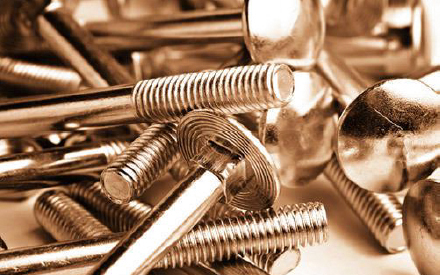Electroplating involves electrolytic deposition of one metal onto another, to improve its appearance and resistance to wear or corrosion. Almost any substrate, ferrous or nonferrous, can be plated. zinc, copper, silver, gold, cadmium, chromium, nickel, and tin are common plating materials. Materials such as hot-rolled carbon steel will appear rough and often dull after plating.
Cold-rolled carbon steel, which typically has a higher-quality surface, generally will require less preparation for equivalent results.
Luster is one of the main objectives in plating. It is a function of the smoothness of the surface to be plated. Brasses, Copper, Gold Silver plating give a very high luster.
Common Plating Processes
1. Zinc Plating
Zinc plating is common in the automotive industry. Zinc deposition resists oxidation and corrosion well. Zinc plating is often associated with the galvanizing process. E electroplating of zinc is often called electro-galvanization.
2. Nickel Plating
Nickel plating is a popular plating metal, especially because it’s useful in electroless plating. Nickel plating is used to coat household products such as doorknobs, cutlery, and shower fixtures for enhanced appeal and wear resistance.
3. Chrome Plating
Chromium plating is mainly used for decorative purposes but can also improve corrosion and friction resistance. Nickel chrome plating is done in items like furniture and automotive trim products. Iron and steel are r common substrates of chrome plating.
4. Gold Plating
Gold is valued for its high resistance to oxidation and electrical conductivity. Gold plating is done to impart these characteristics on metals such as copper and silver. Gold plating is often used for jewellery decoration and for improving the conductivity of electronics parts such as conductivity tracks in PCBs and electrical connectors.
5. Silver Plating
Silver plating essentially does what gold does but serves as the most cost-effective solution as compared to gold. It is done in plating applications that call for decorative appeal and improved electrical conductivity. Copper is the most used substrate for silver plating.
6. Copper Plating
Copper is another popular plating metal for applications that require high conductivity and cost-efficiency. Copper plating also serves the purpose of base coating to support other subsequent coatings.
7. Cadmium Plating
Cadmium plating improves paint adhesion, corrosion resistance and has a lubricating characteristic. Due to this property, cadmium plating offers better wear resistance with minimal plating thickness. Cadmium plating is well used in military and aerospace applications.
8. Tin Plating
Tin plating is used mainly where non-toxicity, high ductility, and good solderability are required. These characteristics make tin plates advantageous in the electronics industry and food processing industry. Tin plating is commonly used on non-ferrous metals such as copper and nickel. Many ferrous metals can also be tin-plated.



 (
(